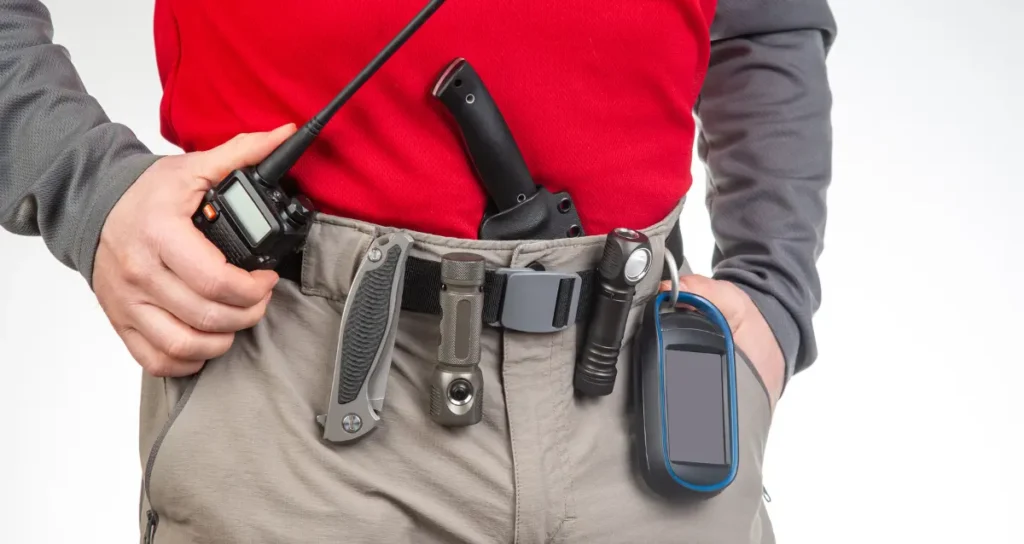7 Practical Tips for Choosing the Most Suitable Self-Defense Tool
Undeniably, gone are the days when you would let your guard down. This is because violent crimes are on the rise. You need a tactical self-defense tool for your safety; thankfully, there are many suppliers of such tools. However, many suppliers and tools can ensure your selection is clear. And with the stakes very high, your safety, you must choose the most functional and practical gear. This detailed guide delves into the valuable tips you should use in the selection process, which are as follows:
1. Identify Your Needs
Start by identifying your needs, assessing your circumstances, and determining which tools best address your safety requirements. This entails assessing if you will need the self defense equipment indoors or outdoors. The assessment will determine the type of equipment you will select for efficient use. For instance, if you need it when hiking or performing other outdoor activities, you should choose a concealed stunning gun or pepper spray. While at it, ensure you evaluate your physical capability of handling the equipment you intend to use.
2. Consider Legal Restrictions
Some of these tools are illegal, depending on your location. Therefore, you should consider any legal restriction on your tool of choice. Doing so is essential as it will help you avoid legal consequences that you will face if you break the law by using it. Furthermore, illegal self-defense tools will be confiscated by law enforcement authorities, leaving you defenseless. To determine the legality, you should do the following:
- Research from local to federal laws
- Consult official resources
- Check with the local authorities
- Confirm with the legal experts
If need be, you should get certification. Some self-defense tools come with certifications or approvals from relevant authorities, indicating their legality. Check if the one you want has this requirement.

3. Evaluate Device Effectiveness
This process is crucial to ensure the self-defense tool performs as expected in a real-life emergency. Note that an ineffective tool can fail to protect you and might even put you at greater risk. The process entails the following:
- Reviewing research and social proof: Read about opinions from self-defense experts and organizations that test and rate self-defense products. This will help you determine how effective it is. Alternatively, you can look for reviews on reputable websites, forums, and relevant platforms.
- Checking manufacturer specifications: Check the specifications for performance data such as range, power, and other relevant metrics.
- Testing and demonstrations: Test the tool in a controlled and safe environment to assess its operation and effectiveness. You can e
- Enrol in self-defense courses that include hands-on training with the tool. Instructors can provide practical insights and allow you to test the tool under simulated conditions.
This process, often overlooked, determines your level of self-defense. It will ensure that you have an effective tool for protection. Therefore, ensure that you do it before ordering the self-defense tool.
4. Assess Ease of Use
Since you will be using the tool independently, assessing the ease of use would be best. This assessment is essential because, in a high-stress situation, the simplicity and intuitiveness of the tool can make the difference between successfully defending yourself and failing to use the tool effectively. To do so, you will check the following features:
- Activation mechanism: The tool should have an intuitive and straightforward activation mechanism, such as a simple button press or lever pull.
- Speed of deployment: You should ensure the tool can be activated quickly, with minimal steps.
- Grip and comfort: The tool should have a comfortable grip that fits well in your hand. Additionally, it should be a non-slip. This ensures you can hold onto it even if your hands are sweaty or wet.
- Accessibility: Assess how easily you can access the tool from where it is stored.
- Concealment: If necessary, the tool should be easily concealable but still accessible.
- Operation simplicity: Few moving parts: the tool should have fewer moving parts. Those with fewer moving parts are generally more reliable and easier to use.
This will give you a tool that you can deploy and use as fast as possible. The features will allow you to use them even in highly stressful situations.

5. Check for Durability
These tools can be costly, so avoid buying them frequently. You can achieve that by checking the durability when selecting them. This process entails checking the materials used to make the blade and handle. The material should be sturdy. For instance, if choosing a dagger, the blade should be aluminum.
The handle can be of rubberized grip. Such information is available in the product’s description. It won’t hurt if you go a step further to check other users’ reviews to determine if the self-defense tool is as described.
6. Make Portability a Priority
A self-defense tool is effective if you can comfortably carry it around and are easily accessible. Therefore, you should consider the tool’s portability. Depending on your chosen tool, you can do this by checking the size and weight. Choose small self-defense tools that you can carry discreetly. It’d be best if the tool you want comes with carry options.
Look for those that come with clips, holsters, or keychain attachments to enhance portability. Additionally, it should be made of lightweight yet sturdy material to enable carrying and not break on impact.
7. Review Maintenance Needs
Self-defense equipment requires maintenance to ensure it functions properly when needed. The type and frequency of maintenance depend on the self-defense tool. For this reason, you should consider the maintenance needs before you buy the tool.
This entails checking your availability and skill level to run the necessary maintenance. It’d be best to choose tools like pepper spray, and tactical flashlights are typically easier to maintain, making them good choices for those looking for low-maintenance options.
Conclusion
Selecting the right tactical self-defense tool is crucial for ensuring your personal safety in today’s uncertain world. By following the steps outlined in this guide—identifying your needs, understanding legal restrictions, evaluating device effectiveness, considering ease of use, checking durability, prioritizing portability, and reviewing maintenance needs
You can make an informed decision that best fits your lifestyle. With the right self-defense equipment, you’ll be better prepared to protect yourself and your loved ones, providing peace of mind in any situation.
FURTHER READING







